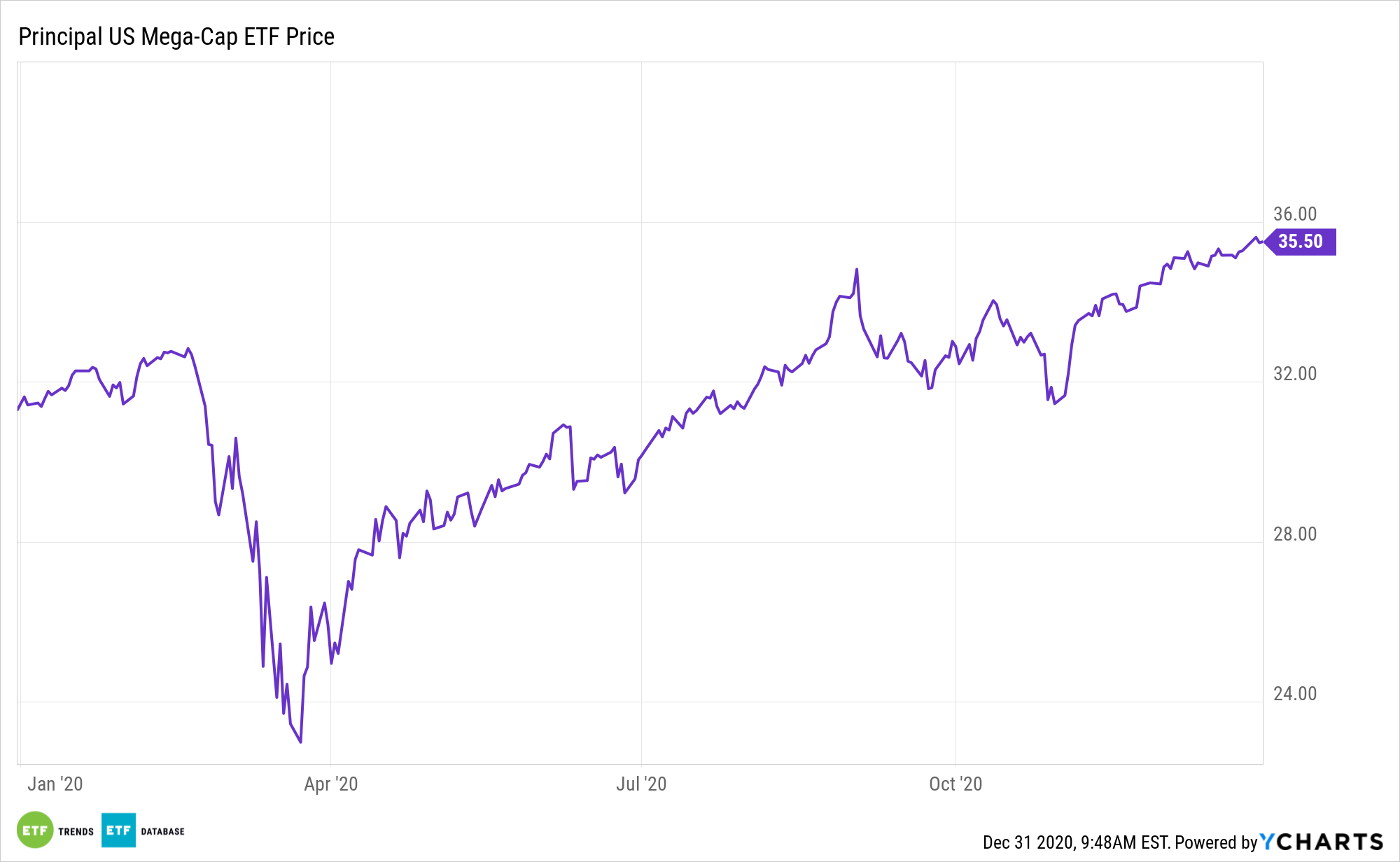Multi-factor exchange traded funds hit some rough spots earlier this year due to value exposure, but the Principal U.S. Mega-Cap Multi-Factor Index ETF (NasdaqGM: USMC) stands as an example of a multi-factor ETF that is primed outperform in the new year.
USMC, which tries to reflect the performance of the Nasdaq US Mega Cap Select Leaders Index, is comprised of companies with the largest market capitalization taken from the Nasdaq U.S. 500 Large Cap Index and screened based on a quantitative model. The fund implements a multi-factor indexing methodology during its selection process.
“Since the start of 2020, investors exposed to multi-factor equity strategies have suffered some underperformance. Investors with a long-term investment horizon can view this as a ‘short-term’ event,” according to BNP Paribas research.
While many multi-factor ETFs lagged in 2020, USMC returned an admirable 13.42%, potentially positioning the fund for a leadership role in 2021.

The USMC ETF: Multi-Factor Mega Caps
As investors look for ways to better navigate the current markets, they may consider smart beta or multi-factor exchange traded fund strategies designed to help enhance and diversify an investment portfolio.
“Diversification and risk control considerations mean most multi-factor equity strategies underweight large and mega-cap stocks,” adds BNP Paribas. “This underweight has included the large information technology stocks in the US market. Their outperformance has been a feature of equity markets in recent years and again during the COVID-19 crisis. These underweights have therefore detracted significantly from performance given the strong outperformance of large-cap stocks relative to small caps.”
USMC ameliorates those problems because it’s a dedicated mega cap fund and one with a 19% weight to technology stocks and an almost 18% weight to the communication services sector.
Mega caps are expected to continue producing from a cash flow and earnings perspective, notably technology companies.
Compared to the S&P 500 Index, the Nasdaq U.S. 500 Large Cap Index exhibits a higher overweight to the size and low-volatility factor, along with a smaller tilt toward momentum and quality. The Nasdaq U.S. 500 Large Cap Index also includes a heavier overweight to consumer staples, healthcare, and communication services while underweight industrials, financials, real estate, consumer discretionary, and materials.
USMC is suitable for long-term investors because it removes the need for factor timing.
“Clearly, factors may be subject to short-term disturbance, but in the long run, the combination of factors such as Quality, Low Volatility, Momentum and Value does deliver sustainable outperformance, especially when they are blended in an efficient portfolio construction framework,” concludes BNP Paribas.
For more on multi-factor strategies, visit our Multi-Factor Channel.
The opinions and forecasts expressed herein are solely those of Tom Lydon, and may not actually come to pass. Information on this site should not be used or construed as an offer to sell, a solicitation of an offer to buy, or a recommendation for any product.

